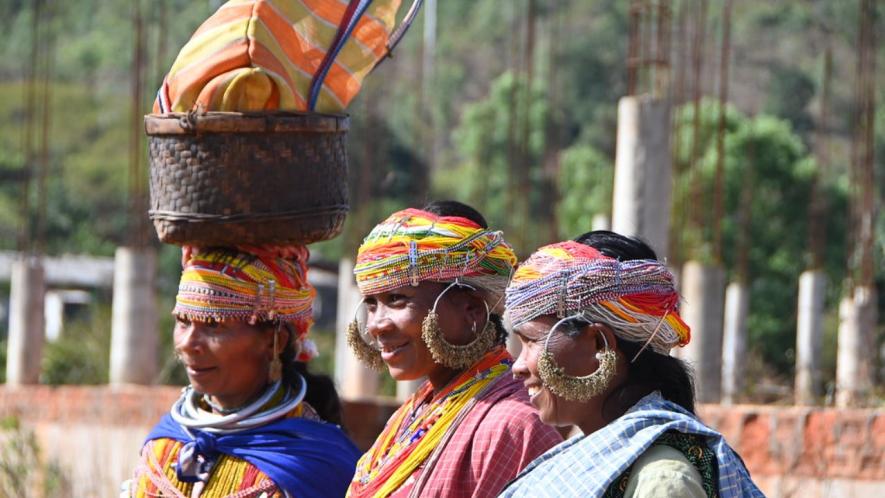Odisha: Will Cultural Roots of Malkangiri’s Bondas Survive a Decade, or More?

Image Courtesy: Flickr
Travelling through the extreme South of Malkangiri district in Odisha gives a different kind of pleasure as one tears through the mountainous terrain that look like formidable barriers against the outside world.
After the sun sets, the mountains merge with the darkness and the only noticeable thing left is slatey smoke slowly sneaking out to engulf the vast landscape that hides the centuries old abode of the primitive tribe, called the Bondas.
Situated at a height of about 3,000 feet above sea level, the area creates natural geographical isolation and separation between the Bondas and the world outside, alienating them completely in many aspects.
It may be little known that the Bonda community is the second most primitive among 75 tribes in India.
This article’s quest is to bring out the interesting features of the tribe that stands out socially, culturally and psychologically.
But with the unbridled invasion of modernity, it is now worrisome as to how long the tribe’s unique culture can endure extraneous pressures. Will the traditional values that the Bondas live by for many generations even survive for a decade, or more?
Can this tribe, known for its innocence within and aversion to outsiders, withstand pressure from the outside world, or will they slowly become mainlanders?
Purists in the field apprehend that, “until and unless developmental schemes launched by the government agencies, like Bonda Development Agency (BDA) pay heed toward preservation of their cultural values and lifestyle, it can be said that in another few years, the Bondas may become part of the mainstream.”
A K Sahu, a renowned scholar on Bondas, says: “They have their own means of nutrient intake, herbal medicines from the wild and strong intimacy with nature, which gives them robust immunity. Alienating them from those completely would be risky.’
Bondas, mainly the women, are better known for being semi-clad, though their bodies are heavily jaded with the weight of ornaments made by themselves.
What is interesting is that their heads are shaven, and they cover it with two types of head bands, known as ‘turuba’ and ‘lobeda’, both made of grass and beads, respectively.
They cover the neck with a cluster of metal bands known as ‘Khagla’ all made of aluminum, plus a cluster of bead necklaces almost covering the upper part of the body.
Although with the changing time, the Bonda women in many areas have started wearing bead necklaces on clothing, like sarees, indicating a perceptible change in choice. Many women have started wearing gowns, like the town folks, signalling a shift in Bonda culture.
Bonda women themselves weave a dress called ‘ringa’ in the shape of a half pant, worn waist down up to the knees.
Extinction Looms?
In the Malkangiri hills, there are 32 Bonda villages who are now looked upon as two communities -- as Upper Bondas and Lower Bondas--, as the latter have literally distanced themselves from the core traditions.
The Upper ones are virtually cut-off from the outside world, inhabiting in most hostile and inaccessible areas, which reflects their ‘unfriendly’ attitude toward outsiders.
The Upper Bondas, with a population of 6,700, are the ones who are most isolated from mainstream society. The Lower Bondas are about 17,000 in number.
“The prophecy of the Bondas’ extinction is not so much about their population but of their tradition and culture” Sahu told this writer.
Perhaps, the community has reached a turning point, as is evident from their slow departure from the customs and faith they followed and close association with nature.
“For example, now they have been given a new God, i.e, Lord Jagannath, thus instilling a new template motivating them to distance from nature worship which, down the centuries, had played a constructive role in conservation of the forest and self-reliance, as forest products give them a sustainable means to their livelihood,” rued Sahu.
It has become a huge challenge for governments of the state and Centre to preserve their traditions and at the same time instil awareness about education and health.
A N Sahu, another scholar on the Bondas, who lived among the tribe for many years for his research, holds the view that, “Bondas have their own preferences of food and herbal medicines for cure and are intimately linked with nature, and that chain should not have been broken. They should be left to themselves, except for education and health, although the damage is already done by the overdrive by official agencies”.
The Bonda community mainly depends on cultivation for its food, in which the women play an active role, while the men, usually lazy, play second fiddle.
Each Bonda village has at its centre almost a century-old tree surrounded by a circle made of big stones and mud that serves as a sitting venue, where the men lounge all day.
Some men can be seen brewing several kinds of liquor from seasonal fruits like jackfruit, papaya and mango. Most of the Bonda men remain in an inebriated state, often leading to nasty brawls among themselves that sometimes end in murders.
The bigger task ahead for the administration is to strike a balance between their cultural roots and traditions, and their minimal awareness toward education, health and hygiene. But all this should be done not at the cost of their centuries-old lifestyle.
The writer is an independent journalist. The views are personal.
Get the latest reports & analysis with people's perspective on Protests, movements & deep analytical videos, discussions of the current affairs in your Telegram app. Subscribe to NewsClick's Telegram channel & get Real-Time updates on stories, as they get published on our website.
























